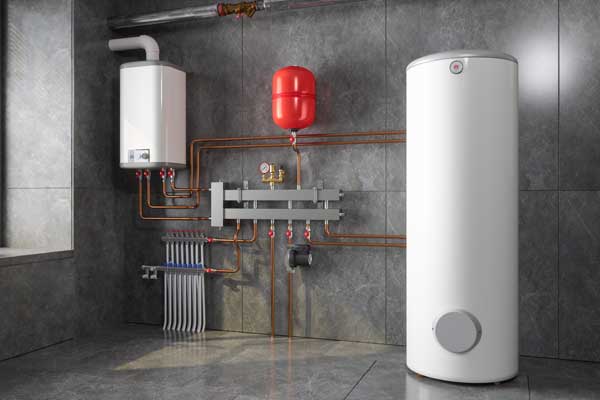Just how do you really feel in regards to Tips For Maintaining Your Hot Water Heater?

Warm water is essential for day-to-day convenience, whether it's for a refreshing shower or washing recipes. To ensure your hot water system runs successfully and lasts longer, normal upkeep is vital. This write-up offers functional pointers and understandings on exactly how to keep your home's hot water system to prevent disturbances and pricey repair work.
Introduction
Preserving your home's warm water system might seem complicated, yet with a couple of simple steps, you can ensure it operates smoothly for years to come. This guide covers everything from understanding your hot water system to DIY maintenance ideas and understanding when to employ specialist assistance.
Value of Keeping Your Warm Water System
Routine upkeep not just prolongs the life expectancy of your hot water system but also ensures it runs efficiently. Neglecting maintenance can bring about lowered performance, greater energy bills, and even premature failing of the system.
Indicators Your Warm Water System Requirements Maintenance
Knowing when your warm water system needs focus can avoid major issues. Keep an eye out for indications such as inconsistent water temperature, unusual sounds from the heating system, or rustic water.
Purging the Hot Water Heater
Purging your water heater gets rid of debris buildup, improving performance and lengthening its life.
Monitoring and Replacing Anode Rods
Anode poles stop rust inside the storage tank. Examining and replacing them when broken is vital.
Complicated Problems Requiring Specialist Assistance
Examples consist of major leakages, electrical problems, or if your hot water heater is regularly underperforming.
Regular Expert Maintenance Perks
Professional upkeep can consist of thorough examinations, tune-ups, and making certain conformity with security standards.
Checking and Adjusting Temperature Setups
Adjusting the temperature level setups makes sure optimum performance and safety and security.
DIY Tips for Upkeep
You can carry out numerous maintenance tasks on your own to keep your warm water system in top problem.
Checking for Leaks
Regularly examine pipelines and connections for leaks, as these can lead to water damages and greater bills.
Comprehending Your Warm Water System
Before diving into upkeep tasks, it's practical to understand the fundamental parts of your hot water system. Usually, this consists of the water heater itself, pipes, anode poles, and temperature level controls.
Month-to-month Upkeep Tasks
Routine monthly checks can help capture small concerns before they escalate.
Checking Stress Alleviation Valves
Checking the pressure relief valve guarantees it functions properly and prevents excessive pressure buildup.
Protecting Pipelines
Shielding warm water pipelines reduces heat loss and can save power.
When to Call a Professional
While DIY maintenance is helpful, some concerns call for specialist proficiency.
Verdict
Regular maintenance of your home's hot water system is vital for effectiveness, long life, and price financial savings. By adhering to these tips and knowing when to seek professional help, you can ensure a reputable supply of hot water without unexpected disturbances.
How to Maintain an Instant Hot Water Heater
Before tinkering with your hot water heater, make sure that it’s not powered on. You also have to turn off the main circuit breaker and shut off the main gas line to prevent accidents. Also turn off the water valves connected to your unit to prevent water from flowing into and out of the appliance. 2. When you’re done, you have to detach the purge valves’ caps. These look like the letter “T” and are situated on either side of the water valves. Doing so will release any pressure that has accumulated inside the valves while at the same time avoid hot water from shooting out and burning your skin. 3. When the purge valves’ caps are removed, you have to connect your hosing lines to the valves. Your unit should have come with three hoses but if it didn’t, you can purchase these things from any hardware or home repair shops. You can also get them from retail stores that sell water heating systems. Read the user’s manual and follow it to complete this task properly. When the hosing lines are connected, open the purge port’s valves. 4. You should never use harsh chemical cleaners or solutions when cleaning your unit. Make use of white vinegar instead. It should be undiluted and you’ll probably use about 2 gallons. 5. Now flush your water heater. This task should probably take about 40 minutes. We can’t give you specific directions for this because the procedure is carried out depending on the type, model and brand of your heater. With that being said, refer to the user’s manual. 6. When you’re done draining the unit, you have to turn off the purge port valves again. Remove the hosing lines that you earlier installed on each of the water valves. Put the valve caps (purge port) back in their respective places and be very careful so as not to damage the rubber discs that are found inside these caps. 7. Now that everything’s back in place, check your user’s manual again to find out how to reactivate your water heating system. 8. Once it is working, turn one of your hot water faucets on just to let air pass through the heater’s water supply pipes. Leave the tap on until water flows smoothly out of it. https://www.orrplumbing.com/blog/2014/september/how-to-maintain-an-instant-hot-water-heater/

We hope you liked our piece about What Kind of Maintenance Do Water Heaters Need?. Thanks a lot for finding the time to browse our article. Kindly take the time to share this post if you appreciated it. I praise you for being here. Come back soon.
View